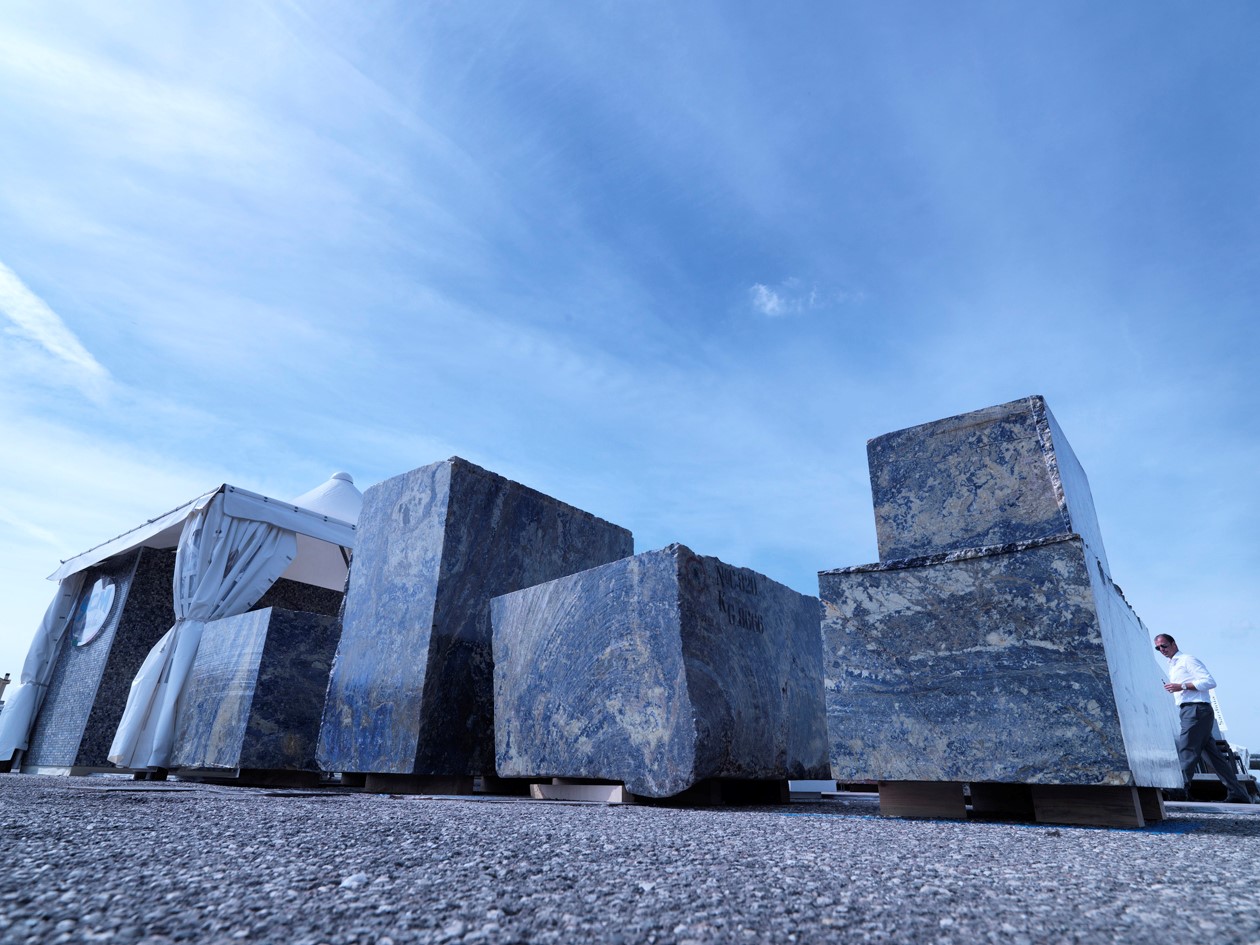
The Italian marble industry has resumed growth on international markets.
Following the consolidation of results in 2014, the first quarter of 2015 is hallmarked by a resumption in exports.
This upturn is driven by the 18.6% leap in international sales for stone quarrying and processing technologies, improving turnover up to €260 million.
A positive performance compared to the first three months of the previous year was also posted by exports of marble, granite and natural stone.
Between unhewn and processed products, this segment posted an increase of 3.2%, thanks to €416.6 million of international orders.
These results emerge from the first statistical survey for 2015 into the Italian stone industry, based on Istat data, carried out by the
The organisations says that the stone material exports from January to March, 2015, once again highlighted the added value of processed products made in Italy in terms of conquering foreign buyers, with turnover coming to €332 million (+3.9%).
The remaining export quota was covered by unhewn blocks and stones worth €84.5 million (-2.6%).
In more detail for processed materials, the first three months of 2015 saw exports to Europe hold steady (€133.9 million, -0.2%) with Germany (€31.8 million, +7.8%); Switzerland (€19.5 million, 8.7%) and the United Kingdom (€17.2 million,+14.2%) being where most orders originated.
In contrast, exports to Eastern Europe fell back (€28.1 million, -10.1%), although Russia went against the trend to confirm its status as the leading buyer in this area (€9.6 million, +3.9%).
North America is still best outlet market outside Europe, with the United States in front (€88.4 million, +2.8%), followed by Canada (€9.1 million, 7.7%), while results were slightly down in the Middle East (€47.3 million, -3.4%), with Saudi Arabia (€16.2 million) and the United Arab Emirates (€12.4 million euros) sustaining demand.
India and China, in the first quarter of 2015, are once again the main buyers of unhewn stone materials, respectively with €22.6 million (+31.2%) and €20.2 million ( -13.9%) of imports from Italy.
In the first three months of the year, total Italian imports also grew by 9.1% to €99.5 million: €72.9 million for raw materials (+5.7%) and the remaining €26.6 million for processed materials (+19.7%).
“Positive results in this quarter are the best preview in the run-up to the 50th anniversary edition of Marmomacc. As can be seen from these figures, exports are vital for the development of a sector in which Marmomacc is the most important b2b and training platform for all operators,”says Ettore Riello, president of Veronafiere.
“Thanks to incoming buyers from more than 140 countries; initiatives set in motion thanks to the Special Made in Italy Promotion Plan implemented by the Ministry of Economic Development, and partnership with Confindustria Marmomacchine, we are sure that the 2015 edition of the event will help Italian companies consolidate these fine results posted at the beginning of the year as well as further enhance the internationality of their business.”
Flavio Marabelli, honorary president of Confindustria Marmomacchine, said: “Overall, the entire Italian natural stone materials and machinery chain is still one of Italy's landmark industrial sectors. This is thanks to a value of exports that in 2014 came close to a total €2.9 billion, equal to almost 75% of production, for an annual trade balance surplus of nearly €2.5 billion euros.
As regards the technology sector, which closed 2014 with a small increase (+1.7%), the first quarter of 2015 saw Italian machinery builders export machinery and equipment for the quarrying and processing stone materials worth in all around €268 million euros, an increase of 18.6% compared to the same period in 2014.
The recovery in this important segment of Made in Italy was spearheaded by non-EU markets, with the United States again ranking first as the outlet market for exports in this sector, with orders coming to €34 million (+86% compared to 2014). Second place is taken by Turkey (€23 million, 8%) and third by Brazil (€21.3 million, +88.2%).
The first European market is once again Germany, ranking fourth in overall terms with €18.2 million of imports (+29.3%).





